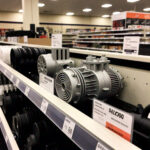As we age, maintaining mobility and a good quality of life becomes increasingly important. However, many elderly individuals experience discomfort or pain in their lower extremities, particularly in the foot, ankle, and knee areas. Foot ankle pain and knee pain elderly can significantly impact daily activities, making it challenging to walk, exercise, or even perform simple tasks. This article explores the causes, treatments, and preventive measures for these common issues, highlighting the importance of early intervention and holistic care.
Foot and Ankle Pain in the Elderly
Foot and ankle pain in the elderly is a prevalent issue that can arise due to various factors. As people age, they often experience wear and tear on the joints, which can lead to conditions such as arthritis, tendonitis, or even bone fractures. Additionally, poor circulation, nerve damage, and foot deformities can also contribute to discomfort.
Common Causes of Foot and Ankle Pain:
- Arthritis: Both osteoarthritis and rheumatoid arthritis can affect the joints in the foot ankle pain, leading to inflammation, stiffness, and pain.
- Tendonitis: Overuse or repetitive strain on the tendons can cause inflammation, particularly in the Achilles tendon or the tendons surrounding the ankle.
- Plantar Fasciitis: The inflammation of the band of tissue that runs across the bottom of the foot can result in sharp, stabbing pain, especially when getting out of bed in the morning.
- Bunions and Deformities: Structural changes, like bunions or hammertoes, can cause misalignment and discomfort in the feet.
- Poor Circulation: Inadequate blood flow to the feet and ankles can cause pain, swelling, and cramps, particularly in individuals with vascular conditions.
Treatment Options:
- Physical Therapy: Strengthening exercises and stretches can improve mobility and reduce pain in the feet and ankles.
- Orthotics: Custom-made shoe inserts can help redistribute pressure and alleviate discomfort.
- Pain Management: Over-the-counter pain relievers or prescribed medication can help manage symptoms.
- Surgical Intervention: In severe cases, surgery may be required to address structural issues or significant damage to the joints.
Knee Pain in the Elderly: A Growing Concern
Knee pain is another common issue for the elderly. The knees bear much of the body’s weight and are subject to constant use, which can lead to deterioration of the cartilage and the onset of conditions like osteoarthritis. Additionally, muscle weakness, ligament damage, and even obesity can contribute to knee pain in older adults.
Common Causes of Knee Pain in the Elderly:
- Osteoarthritis: The most common cause of knee pain in older adults, osteoarthritis leads to the breakdown of cartilage, causing bone-on-bone friction and pain.
- Bursitis: Inflammation of the fluid-filled sacs (bursae) around the knee joint can cause pain, particularly when the knee is bent or extended.
- Meniscus Tears: The meniscus, a cartilage structure in the knee, can tear due to wear and tear, leading to pain, swelling, and reduced mobility.
- Ligament Injuries: Ligament damage, particularly to the ACL or MCL, can occur with sudden movements or falls, causing significant knee instability and pain.
- Obesity: Excess weight can place additional strain on the knees, accelerating the deterioration of cartilage and increasing pain.
Treatment Options:
- Physical Therapy: Targeted exercises can help strengthen the muscles around the knee, improving support and reducing pain.
- Medications: Anti-inflammatory drugs, corticosteroid injections, and pain relievers can provide temporary relief from knee pain.
- Weight Management: Reducing excess weight can alleviate the pressure on the knees, reducing pain and slowing the progression of conditions like arthritis.
- Surgery: In cases where other treatments are ineffective, knee replacement surgery or arthroscopic surgery may be necessary to improve function and reduce pain.
Preventing Foot, Ankle, and Knee Pain in the Elderly
While some degree of wear and tear is inevitable as we age, there are several steps elderly individuals can take to prevent or reduce foot, ankle, and knee pain:
- Maintain a Healthy Weight: Reducing excess weight lessens the strain on joints, especially the knees.
- Exercise Regularly: Low-impact exercises like swimming, cycling, or walking can help maintain flexibility, strength, and joint health.
- Wear Proper Footwear: Supportive shoes with good arch support can prevent foot and ankle pain. Avoid wearing high heels or shoes that are too tight.
- Practice Balance and Strengthening Exercises: Strengthening the muscles around the knees, ankles, and feet can improve stability and prevent falls or injuries.
- Stay Active: Regular movement encourages circulation, reduces stiffness, and can prevent the development of chronic pain in the lower extremities.
Conclusion: Embracing Holistic Care for Lower Extremity Pain
Foot ankle pain and knee pain are not just an inevitable part of aging; they are treatable conditions that can often be managed with the right care and intervention. Early detection and a tailored approach to treatment are crucial in preventing further damage and improving quality of life for the elderly. As the medical field continues to advance, innovative treatments and preventive measures offer hope for those dealing with chronic pain. By adopting a holistic care approach and making lifestyle adjustments, elderly individuals can maintain mobility and enjoy an active, fulfilling life.
If you or a loved one is suffering from foot, ankle, or knee pain, consider seeking help from a healthcare provider specializing in vascular and musculoskeletal health to explore personalized treatment options that can help restore comfort and mobility.





